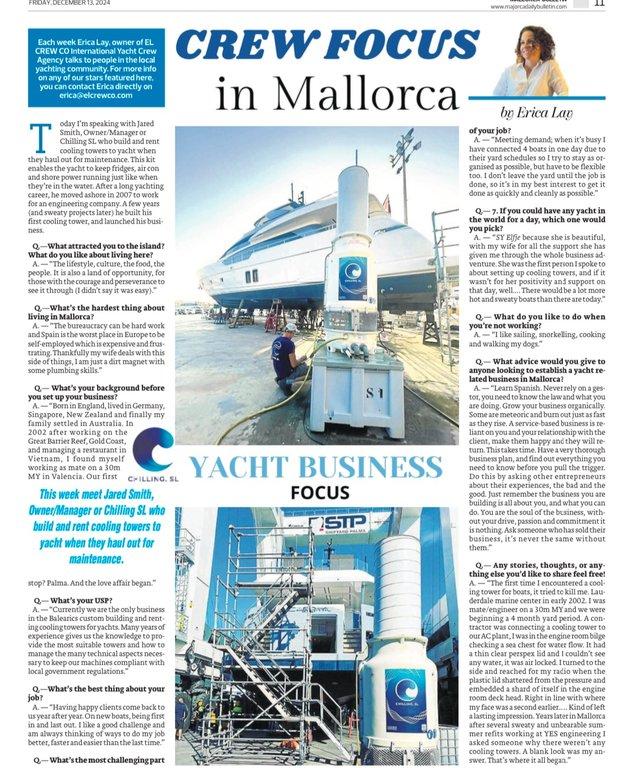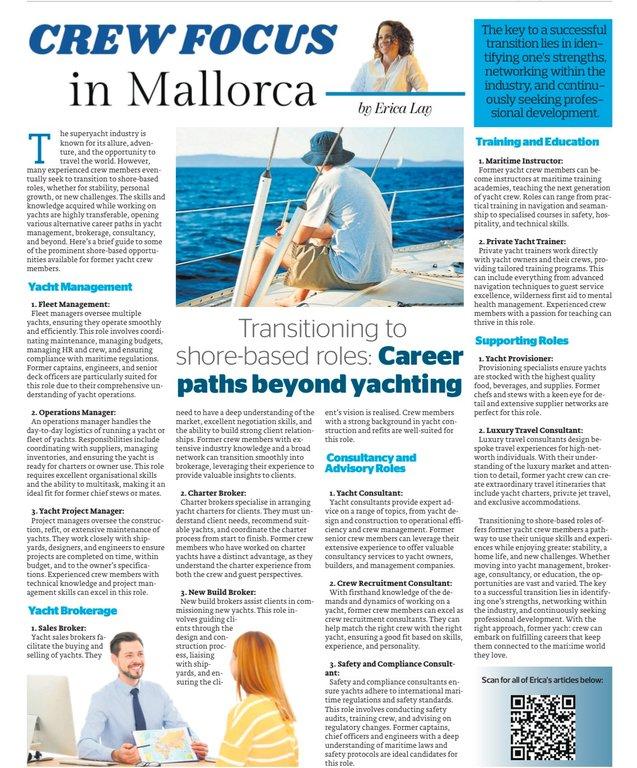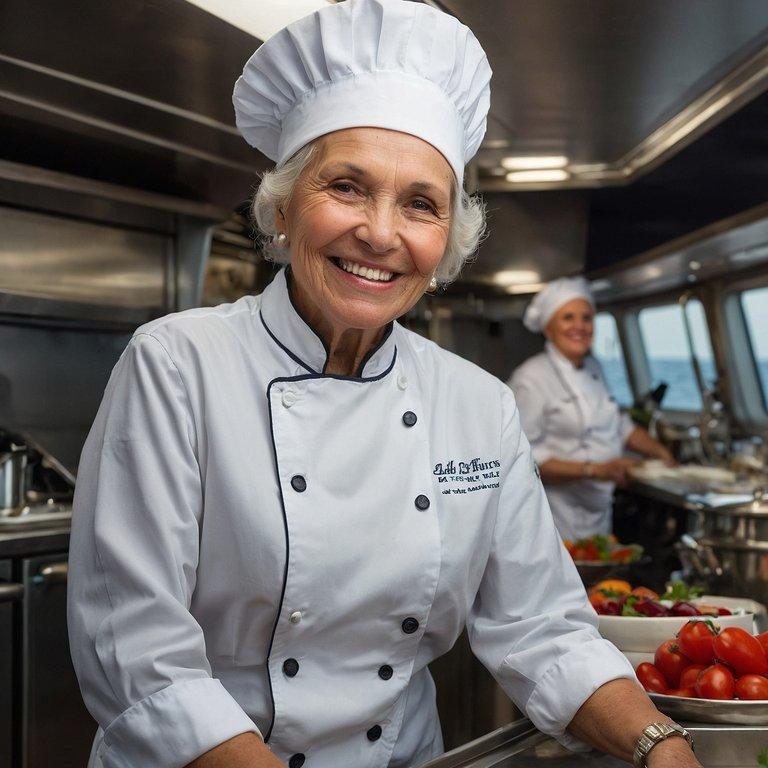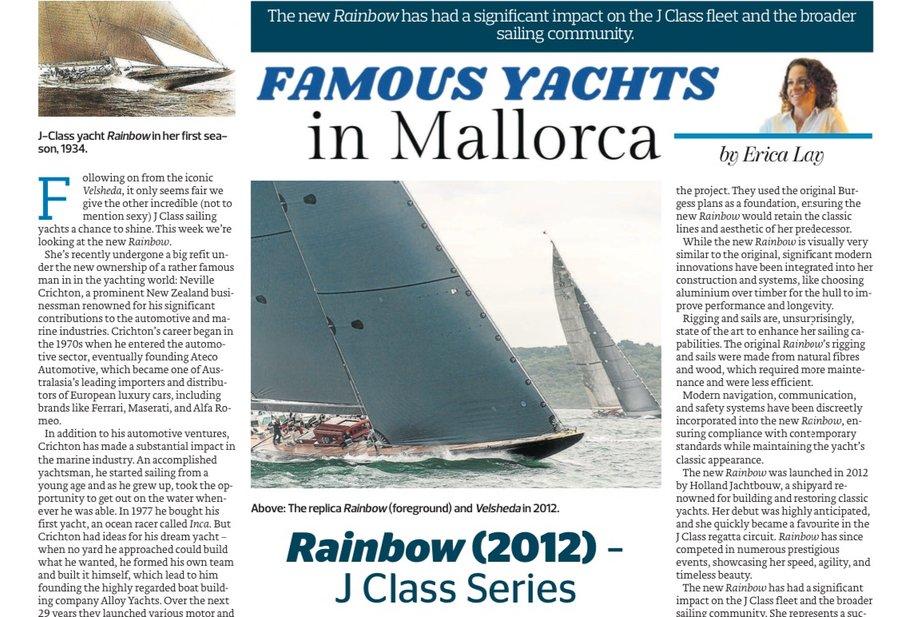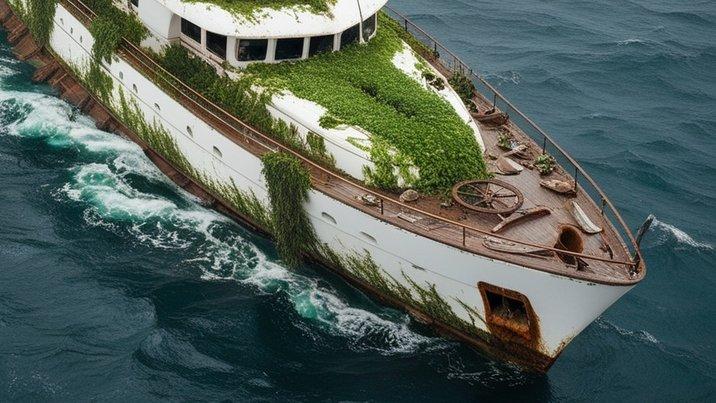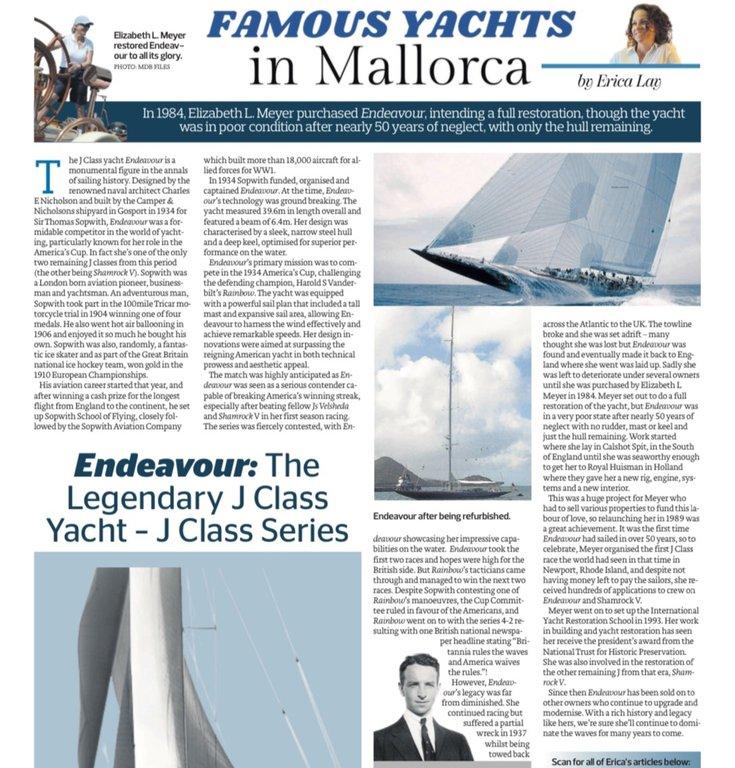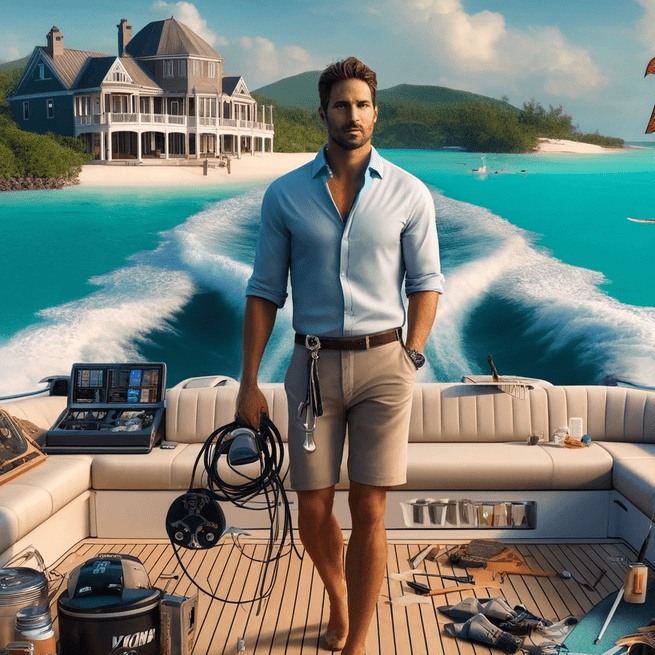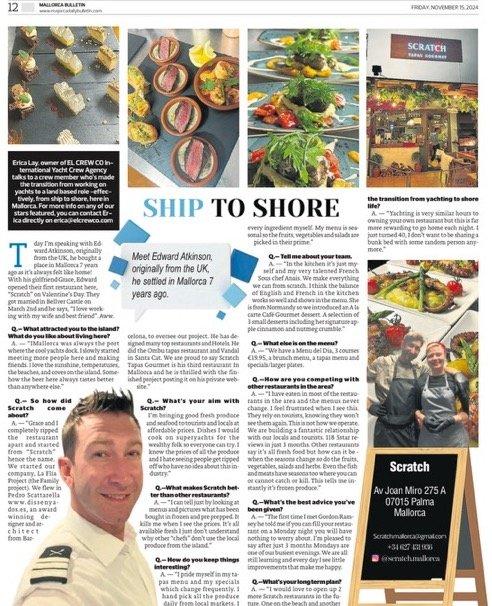Hub – CREW FOCUS MALLORCA
Yacht Business Focus on Mallorca. With Courtesy of Erica Lay & The Mallorca Bulletin. #24/0220.
December 13, 2024 · 4 min read
Erica Lay owner of EL CREW International Yacht Crew Agency http://www.elcrewco.com/ erica@elcrewco.com
YACHT BUSINESS FOCUS IN MALLORCA
Each week Erica Lay, owner of EL CREW CO International Yacht Crew Agency talks to people in the local yachting community. For more info on any of our stars featured here, you can contact Erica directly on erica@elcrewco.com
_________________________
Today I’m speaking with Jared Smith, Owner/Manager or Chilling SL who build and rent cooling towers to yacht when they haul out for maintenance. This kit enables the yacht to keep fridges, air con and shore power running just like when they’re in the water. After a long yachting career, he moved ashore in 2007 to work for an engineering company. A few years (and sweaty projects later) he built his first cooling tower, and launched his business.
1. What attracted you to the island? What do you like about living here?
The lifestyle, culture, the food, the people. It is also a land of opportunity, for those with the courage and perseverance to see it through (I didn’t say it was easy).
2. What’s the hardest thing about living in Mallorca? –
The bureaucracy can be hard work and Spain is the worst place in Europe to be self-employed which is expensive and frustrating. Thankfully my wife deals with this side of things, I am just a dirt magnet with some plumbing skills.
3. What’s your background before you set up your business? –
Born in England, lived in Germany, Singapore, New Zealand and finally my family settled in Australia. In 2002 after working on the Great Barrier Reef, Gold Coast, and managing a restaurant in Vietnam, I found myself working as mate on a 30m MY in Valencia. Our first stop? Palma. And the love affair began.
4. What’s your USP?
Currently we are the only business in the Balearics custom building and renting cooling towers for yachts. Many years of experience gives us the knowledge to provide the most suitable towers and how to manage the many technical aspects necessary to keep our machines compliantwith local government regulations.
5. What’s the best thing about your job?
Having happy clients come back to us year after year. On new boats, being first in and last out. I like a good challenge and am always thinking of ways to do my job better, faster and easier than the last time.
6. What’s the most challenging part of your job?
Meeting demand; when it’s busy I have connected 4 boats in one day due to their yard schedules so I try to stay as organised as possible, but have to be flexible too. I don’t leave the yard until the job is done, so it’s in my best interest to get it done as quickly and cleanly as possible.
7. If you could have any yacht in the world for a day, which one would you pick?
SY Elfje because she is beautiful, with my wife for all the support she has given me through the whole business adventure. She was the first person I spoke to about setting up cooling towers, and if it wasn’t for her positivity and support on that day, well…. There would be a lot more hot and sweaty boats than there are today.
8. What do you like to do when you’re not working?
I like sailing, snorkelling, cooking and walking my dogs.
9. What advice would you give to anyone looking to establish a yacht related business in Mallorca?
Learn Spanish. Never rely on a gestor, you need to know the law and what you are doing. Grow your business organically. Some are meteoric and burn out just as fast as they rise. A service-based business is reliant on you and your relationship with the client, make them happy and they will return. This takes time. Have a very thorough business plan, and find out everything you need to know before you pull the trigger. Do this by asking other entrepreneurs about their experiences, the bad and the good. Just remember the business you are building is all about you, and what you can do. You are the soul of the business, without your drive, passion and commitment it is nothing. Ask someone who has sold their business, it’s never the same without them.
10. Any stories, thoughts, or anything else you’d like to share feel free! –
The first time I encountered a cooling tower for boats, it tried to kill me. Lauderdale marine center in early 2002. I was mate/engineer on a 30m MY and we were beginning a 4 month yard period. A contractor was connecting a cooling tower to our AC plant, I was in the engine room bilge checking a sea chest for water flow. It had a thin clear perspexlid and I couldn’t see any water, it was air locked. I turned to the side and reached for my radio when the plastic lid shattered from the pressure and embedded a shard of itself in the engine room deck head. Right in line with where my face was a second earlier….. Kind of left a lasting impression. Years later in Mallorca after several sweaty and unbearablesummer refits working at YES engineering I asked someone why there weren’t any cooling towers. A blank look was my answer. Thats where it all began.

